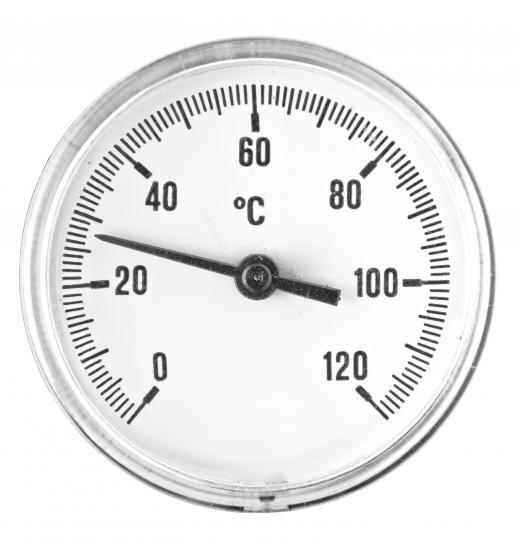How Was the Celsius Temperature Scale Developed?
 Tricia Christensen
Tricia Christensen
The Celsius temperature scale, which measures heat or cold, from 0° for frozen water, to 100° for boiling water, was invented by Anders Celsius, a Swedish astronomer, in 1742. He named the scale the centigrade scale, and people may occasionally still see temperatures listed with this term. In 1954, however, scientists officially named the temperature scale after the astronomer to honor his work.
The original scale differs from the modern use of Celsius. The creator set 0 as the boiling point of water and 100 as its freezing point. This was reversed shortly after his death to the more modern usage.

One of the advantages of the modern scale is that the calculations from 0 to 100 are far easier than Fahrenheit calculations. 0°C is equivalent to 32°F. The boiling point of water, under 1° of atmospheric pressure, is 100°C or 212°F. The base 100 method is simply easier to calculate than the more complex Fahrenheit formula. Converting Celsius to Fahrenheit follows this basic formula: F = (C x 1.8) + 32.

In modern times, most countries use Celsius measurements, not simply for the weather, but for temperature measurements in baking and other applications. Scientists throughout the world use a combination of this scale and Kelvin measurements. The Kelvin scale is based on the fixed points of absolute zero, where nothing could be colder, and all matter solidifies, and the triple point of water, where gas, liquid and solid water are equally used. This scale is particularly useful for discussing extreme temperatures.

In the US, people typically use Fahrenheit in daily use, but most weather channels also give the conversion to Celsius. Cookbooks made in the US usually give conversions as well, since baking would be completely thrown off by following the instructions for one temperature scale in an oven that uses the other. A cake baked for an hour at 325°C (625°F) would be a disaster.
AS FEATURED ON:
AS FEATURED ON:













Discussion Comments
@Post 3 - I'm not sure what you are looking for when you say "how he made the scale." Thermometers already existed, so he could measure temperature, but the Fahrenheit scale (which is all they had then) isn't very logical if you think about it--the temperatures are all completely random. So he picked two nice points--water's boiling and freezing points at sea level--and made them zero and a hundred. Then he cut it up into a hundred degrees.
Celsius and kelvin are closely related, but not so Fahrenheit, which is why converting Fahrenheit to Celsius (or vice versa) is so darn difficult.
This information was good but I'm doing an assignment at school and I have to find out how Celsius actually made the scale. I'm finding that really difficult.
This was extremely helpful! Thanks so much guys! I'll be sure to use this website more often, but I had some trouble finding how fahrenheit was developed and also how kelvin was developed. But other than that, I would've been completely lost on my homework if it wasn't for this site!
Post your comments